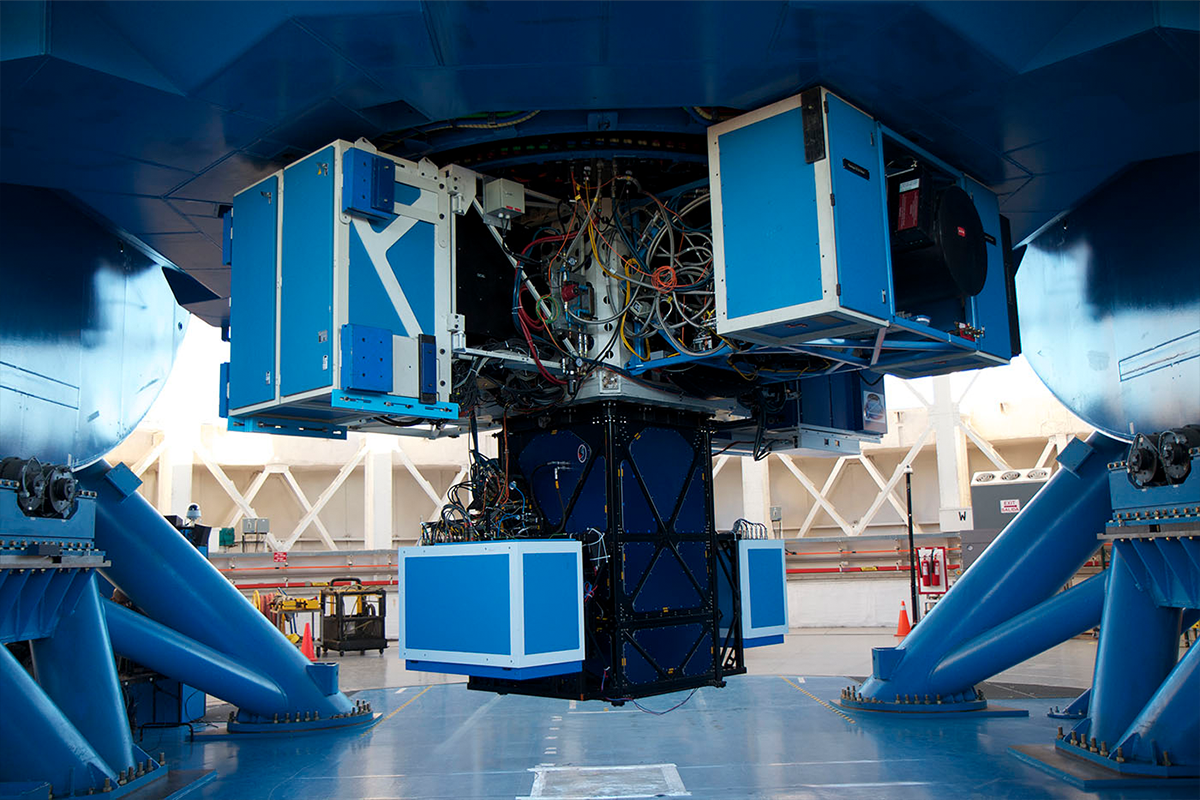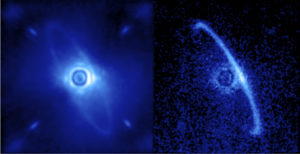Gemini Planet Imager


Technical Specifications |
|
|---|---|
| Instrument Name | Gemini Planet Imager |
| Acronym | GPI |
| First Light | November 2013 |
| Wavelength Range | 0.9 - 2.5 microns (infrared) |
| Instrument Type | High contrast imager |
| Status | On loan at the University of Notre Dame from the Gemini-South Observatory |

The Gemini Planet Imager captured its first light image, showing a narrow ring of dust around the young star HR4796A. This ring likely contains dust remnants from planet formation, and some suggest it may be shaped by an unseen planet. The left image displays normal light, including the dust ring and starlight scattered by Earth’s atmosphere. The right image reveals only polarized light, eliminating unpolarized starlight and highlighting strongly polarized light from the disk’s back edge.
Credit: Processing by M. Perrin, STScI.
The Gemini Planet Imager (GPI) is an instrument capable of detecting infrared light emitted by giant gas planets, similar to Jupiter, that are orbiting their star, much like the gas giant planets in our Solar System were when it formed. GPI has a very advanced technology for imaging exoplanets. It is optimised for the study of faint planets close to their star, for the study of their atmosphere, and for the study of debris disks present around these stars. GPI also has a spectroscopic mode that allows the study of planets in more detail. It has been installed t the Gemini-South Observatory in Chile, one of the largest telescopes in the world, since 2014.
GPI is an international project under the scientific leadership of Bruce Macintosh and Project Director David Palmer, both at the Lawrence Livermore National Laboratory (LLNL). The optical design, construction, and testing of the spectrograph that makes up the instrument were carried out by the team led by Prof. James Larkin of the Infrared Laboratory at the University of California at Los Angeles, in very close collaboration with OMM Director René Doyon. The staff of the Observatoire du Mont-Mégantic, the Institut national d’optique in Quebec City and the company Immervision in Montreal also participated in the development of the spectrograph.